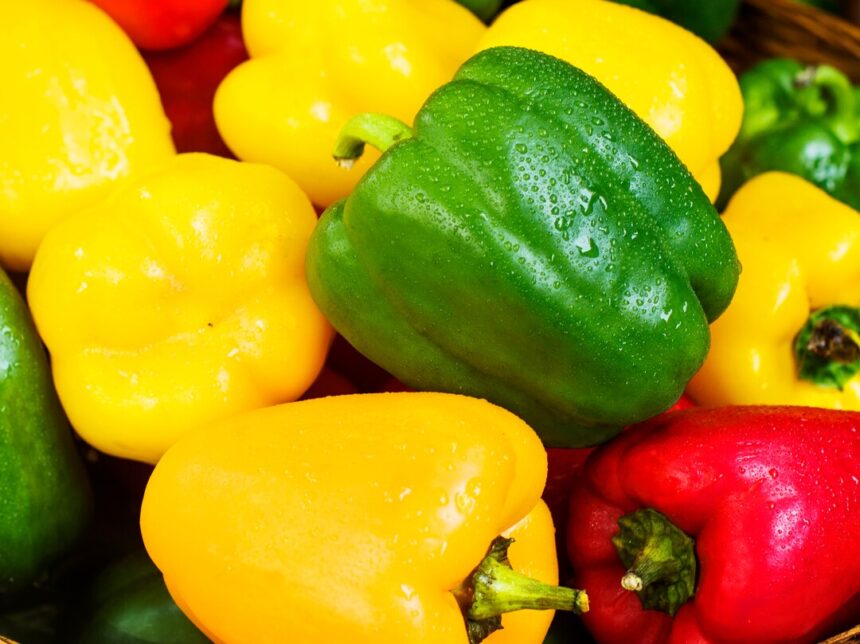Bell peppers, with their vibrant colors, crisp texture, and sweet flavor, are a staple in South African cuisine and a popular choice for both home cooks and commercial growers. To meet the demand for high-quality bell peppers and maximize yield, farmers in South Africa employ various techniques and practices aimed at enhancing crop quality, increasing productivity, and optimizing resource utilization. In this article, we’ll explore some effective techniques for enhancing the quality and yield of bell peppers in South Africa.
Selecting Suitable Varieties:
Choosing the right varieties of bell peppers is essential for achieving optimal quality and yield in South Africa’s diverse growing conditions. Consider factors such as climate, soil type, disease resistance, and market preferences when selecting varieties that are well-suited to your region. Popular bell pepper varieties grown in South Africa include California Wonder, Yolo Wonder, Aristotle, and Ace.
Soil Preparation and Management:
Proper soil preparation is crucial for promoting healthy root development and maximizing bell pepper yield. Before planting, ensure that the soil is well-drained, fertile, and rich in organic matter. Conduct soil tests to assess nutrient levels and pH, and amend the soil as needed to provide the optimal growing conditions for bell peppers. Implement practices such as crop rotation and cover cropping to improve soil structure, suppress weeds, and reduce the risk of soilborne diseases.
Planting and Spacing:
When planting bell peppers, pay attention to spacing to optimize plant growth and yield. Plant seedlings or transplants in rows with adequate spacing between plants to allow for proper air circulation, sunlight penetration, and fruit development. Space rows approximately 18 to 24 inches apart, with plants spaced 12 to 18 inches apart within rows, depending on the variety and growing conditions.
Irrigation Management:
Proper irrigation is essential for ensuring consistent moisture levels and preventing water stress in bell pepper plants. Monitor soil moisture regularly and provide irrigation as needed to maintain optimal growing conditions. Consider using drip irrigation or soaker hoses to deliver water directly to the root zone and minimize water waste. Avoid overwatering, as excessive moisture can lead to root rot and other fungal diseases.
Fertilization:
Applying balanced fertilizers at the right times can help maximize yield and quality in bell pepper crops. Incorporate organic fertilizers such as compost or well-aged manure into the soil before planting to improve soil fertility and provide essential nutrients. During the growing season, supplement with additional fertilizers as needed based on soil test recommendations and plant nutrient requirements.
Weed Control:
Effective weed control is essential for reducing competition for nutrients, water, and sunlight and optimizing bell pepper yield. Implement cultural practices such as mulching, hand-weeding, or mechanical cultivation to suppress weed growth and maintain a weed-free environment around bell pepper plants. Consider using herbicides judiciously as part of an integrated weed management strategy, taking care to follow label instructions and minimize environmental impact.
Pest and Disease Management:
Bell peppers are susceptible to various pests and diseases that can impact yield and quality if left unchecked. Monitor plants regularly for signs of pest infestation or disease symptoms, such as insect damage, leaf spots, or wilting. Implement cultural practices such as crop rotation, sanitation, and pest-resistant varieties to minimize pest and disease pressure. Consider using organic pesticides or fungicides as needed to control pests and diseases while minimizing environmental impact.
Support and Pruning:
Providing support for bell pepper plants and pruning them appropriately can help improve airflow, reduce disease incidence, and optimize fruit production. Stake or cage plants to support heavy fruit loads and prevent them from bending or breaking under their own weight. Prune plants selectively to remove damaged or diseased foliage, improve light penetration, and encourage the development of larger, higher-quality fruits.
Harvesting Techniques:
Harvest bell peppers at the peak of ripeness to maximize flavor, color, and nutritional value. Wait until fruits have reached their mature size and color, and gently twist or cut them from the plant using sharp scissors or pruning shears. Handle harvested peppers with care to minimize bruising and damage, and cool them down promptly to maintain freshness and quality.
Post-Harvest Handling:
Handle harvested bell peppers with care to preserve their quality and extend their shelf life. Remove any debris or field heat from harvested peppers promptly and cool them down to the optimal storage temperature as soon as possible. Store peppers in a cool, humid environment or refrigerate them to prevent wilting and maintain crispness and flavor.
By implementing these techniques for enhancing quality and yield, farmers in South Africa can maximize the productivity and profitability of their bell pepper crops. From soil preparation and planting to irrigation management, pest control, and harvesting, attention to detail and proper management practices are essential for success. By adopting sustainable and integrated approaches to bell pepper production, farmers can ensure a bountiful harvest of high-quality peppers that meet market demands and contribute to a thriving agricultural sector in South Africa.
Join 'Farmers Mag' WhatsApp Channel
Get the latest Farming news and tips delivered straight to your WhatsApp
CLICK HERE TO JOIN






